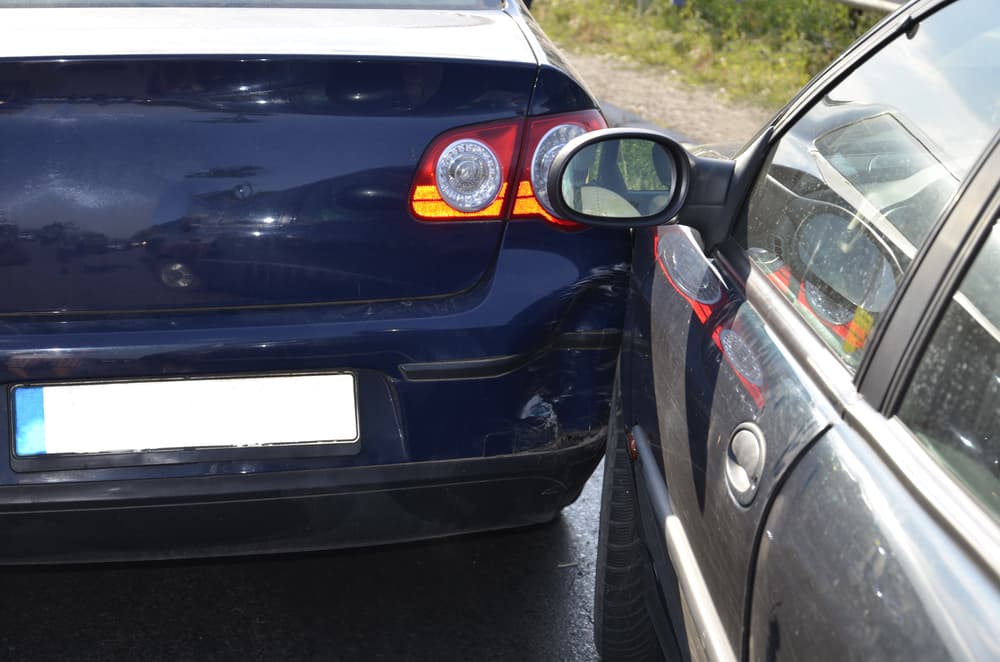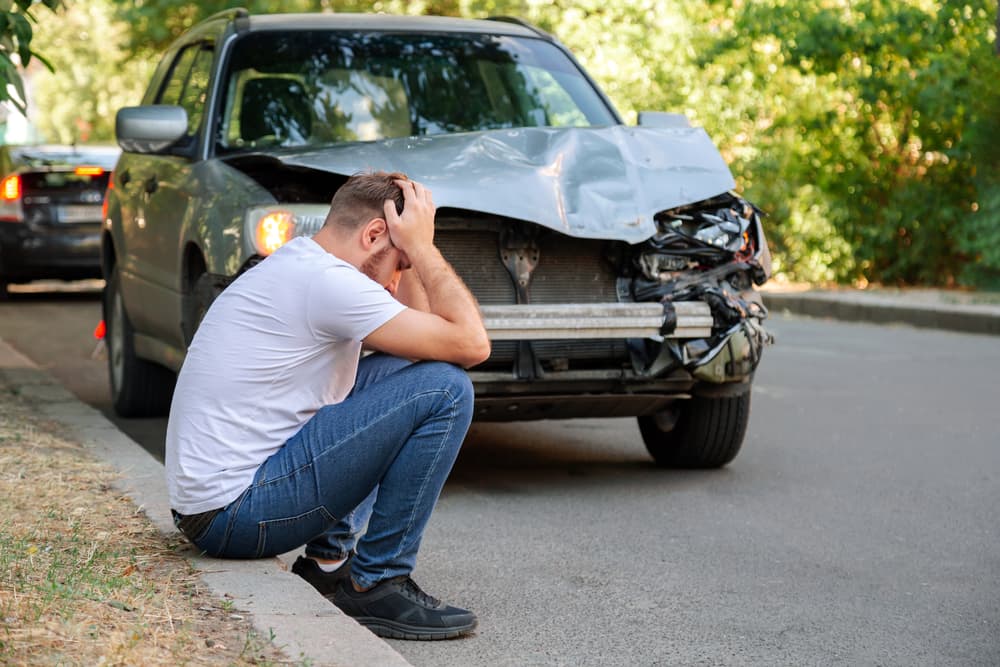
In the busy streets of Minnetonka, car accidents are an unfortunate reality many of us face. While every collision is unique in its circumstances, we frequently encounter common types of car accidents. Whether it's a rear-end collision, a T-bone accident, or a single-vehicle crash, each type has its own set of legal and medical implications.
At Fields Injury Law, our dedicated team of Minnetonka car accident attorneys possesses a vast knowledge of the intricacies surrounding various car accidents. Join us as we examine the specifics of these collisions and provide insights into what they mean for victims and their legal rights.
If you have a legal matter to discuss with our Minnetonka compensation and personal injury lawyers, reach out to Fields Injury Law as soon as possible for a free consultation with a member of our team.
Sideswipe Collisions

Sideswipe collisions, often referred to as glancing blows, occur when two vehicles traveling parallel to each other make side-to-side contact. This type of collision can take place between two cars moving in the same direction (known as a same-direction sideswipe) or in opposite directions (known as an opposite-direction sideswipe).
According to the National Highway Traffic Safety Administration, sideswipe collisions account for nearly 13 percent of all crashes.
These car accidents often tend to produce more severe injuries than other types of collisions due to the conflicting speeds of the vehicles involved.
Some of the common causes of sideswipe collisions include:
- Lane departure: The most common cause of sideswipe accidents is a driver unintentionally departing from their lane, which can be due to distractions, drowsiness, or a lack of attention.
- Blind spots: Failure to check one’s mirrors or misjudging a blind spot can result in a vehicle changing lanes directly into another car's path.
- Improper turns: Especially at intersections, a driver may misjudge the distance and turn too early or late, sideswiping an adjacent vehicle.
- High-Speed highways: Even minor miscalculations or rapid maneuvers can lead to sideswipe collisions on fast-moving roads.
- Impaired driving: Alcohol, drugs, or medications can impair judgment and coordination, leading drivers to drift from their lanes.
While sideswipe collisions might seem less severe than front-end or rear-end crashes, they can still lead to significant vehicle damage and bodily injuries. The force of the impact can jolt occupants violently, leading to whiplash, fractures, and even traumatic brain injuries. Additionally, a sideswipe can destabilize a vehicle, potentially causing it to spin out, hit other cars, or even roll over.
Determining fault in a sideswipe collision can be more complex than in other types of accidents. If both drivers claim the other veered out of their lane, it becomes a case of one word against the other absent witnesses or video evidence. Therefore, gather as much evidence as possible at the scene, like photographs, witness statements, and police reports, to establish liability.
Rear-End Collisions

As the name would suggest, these accidents occur when a following vehicle collides with another car directly in front. Rear-end collisions are among the most common types of vehicle accidents, occurring when one vehicle strikes the back of another. These accidents can range from minor fender-benders to high-impact crashes with severe consequences.
Crash data analysis suggests that the difference between near-crashes and rear-end accidents is typically minimal, save for the split seconds in which the at-fault driver recognizes that the accident is about to occur. Just a moment of inattention can turn a near-accident or a slight bump into a major crash with serious injuries.
Some causes of rear-end car accidents include:
- Following too closely: Tailgating is a frequent cause of rear-end collisions, leaving inadequate time or distance to stop safely if the leading vehicle suddenly brakes.
- Distractions: Activities like texting, eating, or adjusting the radio can divert a driver's attention, causing a delayed reaction time.
- Weather conditions: Slippery roads from rain, snow, or ice can reduce tire traction, increasing stopping distances. Drivers are responsible for accounting for changes in road conditions and adjusting their driving accordingly; however, many fail to do so.
- Quick stops: Abrupt braking by the leading vehicle, whether due to traffic, a pedestrian crossing, or another obstacle, can lead to collisions if the following vehicle isn't maintaining a safe distance.
- Impaired driving: Driving under the influence of alcohol or drugs slows reaction times and hampers judgment, increasing the risk of rear-ending another vehicle.
Rear-end collisions can cause significant injuries, including whiplash, a neck injury due to the rapid back-and-forth movement of the head. Other potential injuries include spinal cord issues, broken bones, head injuries, and facial contusions from airbag deployment.
In most cases, the driver of the rear vehicle is at fault in rear-end collisions, as drivers generally must maintain a safe following distance and prepare for sudden stops. However, circumstances can complicate matters. For instance, if the leading vehicle's brake lights malfunction, it could contribute to the collision.
As with any accident, documenting the scene, gathering witness testimonies, and obtaining a police report can establish fault when pursuing a claim.
Head-On Collisions

Head-on collisions, where the front ends of two vehicles crash into each other, account for a relatively small percentage of total car accidents, but are disproportionately responsible for a significant number of severe injuries and an estimated 14 percent of all traffic accident fatalities.
Accidents involving roadway departure or a vehicle that leaves its path of travel and crosses into another road or lane can be influenced by many factors, including:
- Wrong-way driving: Entering highways or roads via exit ramps or driving the wrong direction in one-way traffic lanes frequently results in head-on crashes.
- Impaired driving: Intoxication due to alcohol, drugs, or medications can lead to an increased likelihood of veering into oncoming traffic.
- Distracted driving: Activities like texting or phone calls can divert a driver's attention, causing them to inadvertently cross centerlines or medians.
- Fatigue: Drowsy driving can result in a driver nodding off and drifting into the opposite lane. This risk is particularly prevalent among truck drivers and shift workers who are required to travel for their jobs.
- Avoiding obstacles: Swerving to evade obstacles, animals, or other vehicles can inadvertently place a driver in the path of oncoming traffic.
The nature of head-on collisions means that the impact is often severe, as the speed of both vehicles combines to intensify the force of the crash. This leads to catastrophic injuries, including traumatic brain injuries, spinal cord injuries, fractures, internal organ damage, and lacerations. Tragically, many head-on collisions result in fatalities, even when seatbelts and airbags function correctly.
Determining fault in head-on collisions can be clearer than in other accident types due to the circumstances that lead to these crashes. However, the severity of the accidents often means that legal claims can involve significant compensation sums. With the risk of long-term injuries or disabilities, it's crucial to ensure that any compensation considers future medical expenses and life-altering consequences.
T-Bone Collisions

T-bone accidents, also known as side-impact or broadside collisions, occur when the front of one vehicle collides with the side of another, forming a T shape.
These accidents often take place at intersections and can result in severe consequences due to the limited protection vehicle sides offer compared to the front or rear. The severity of injuries in these accidents is also heavily determined by the types of vehicles involved.
Differences in mass can mean that a driver in a small passenger vehicle struck by an SUV or light truck will face far graver injuries than the driver in the obstructing vehicle.
Some common factors that lead to side-impact collisions include:
- Failed traffic signals: A malfunctioning or ignored traffic light can lead one driver to enter an intersection, believing they have the right of way, resulting in a collision.
- Stop sign violations: Not coming to a complete stop or failing to yield at stop signs can lead to T-bone crashes.
- Distracted driving: Distractions, like texting or using a GPS, can cause drivers to inadvertently enter intersections without checking for cross traffic.
- Impaired judgment: Driving under the influence of alcohol, drugs, or certain medications can cloud a driver's decision-making capabilities, leading to risky maneuvers at intersections.
- Speeding: Excessive speed reduces a driver's reaction time and can escalate the severity of a T-bone collision.
The side of a vehicle offers less space and structural protection than its front or rear, making occupants particularly vulnerable to T-bone collisions. Injuries can range from broken bones and internal injuries to traumatic brain injuries, especially if the impact affects the side where a passenger or driver is seated. While advancements like side airbags have improved safety, the risk remains significant.
Establishing fault in T-bone accidents often revolves around right-of-way rules and any available traffic signals or signs. However, complications arise when signals are disputed, malfunctioning, or if both parties claim to have had the right of way.
Drunk Driving Accidents

Drunk driving remains a persistent and devastating problem on roads worldwide. Despite public awareness campaigns, strict laws, and ever-evolving detection methods, alcohol-impaired drivers continue to pose significant risks to themselves, other motorists, pedestrians, and communities at large.
Thousands of fatalities and countless injuries in the United States result from accidents involving alcohol-impaired drivers every year. These incidents account for a substantial percentage of all traffic-related deaths.
In Minnesota, drunk drivers injured 2,228 people in one recent year alone.
- Repeat offenders: Studies indicate that by the time a driver is arrested for drunk driving, they may have driven under the influence numerous times without being caught.
- Demographics: While drunk driving affects all age groups, 20- to 34-year-olds represent half of all offenders in DUI-related accidents in Minnesota.
The impaired judgment, reduced reaction time, and compromised motor skills associated with intoxication often lead to high-speed collisions, resulting in severe injuries or fatalities.
Beyond medical bills, victims may face property damage costs, lost wages, and long-term rehabilitation expenses. Additionally, these accidents can leave lasting scars physically and emotionally.
Victims might suffer from post-traumatic stress, anxiety, and depression. For families who lose a loved one, the emotional toll is immeasurable. Families who have faced such tragic losses may have the grounds to file a wrongful death suit to obtain compensation and justice following such an event.
Get the Fields Advantage — Reach Out to an Experienced Car Accident Attorney Today
Car accident victims should prioritize their immediate health by seeking medical attention post-accident, even if they feel initially unharmed. You need legal counsel.
At Fields Injury Law, our dedicated personal injury attorneys are deeply experienced in representing victims of all types of motor vehicle accidents, ensuring they receive the justice and compensation they deserve. Contact us today online or at (612) 206-3495.

